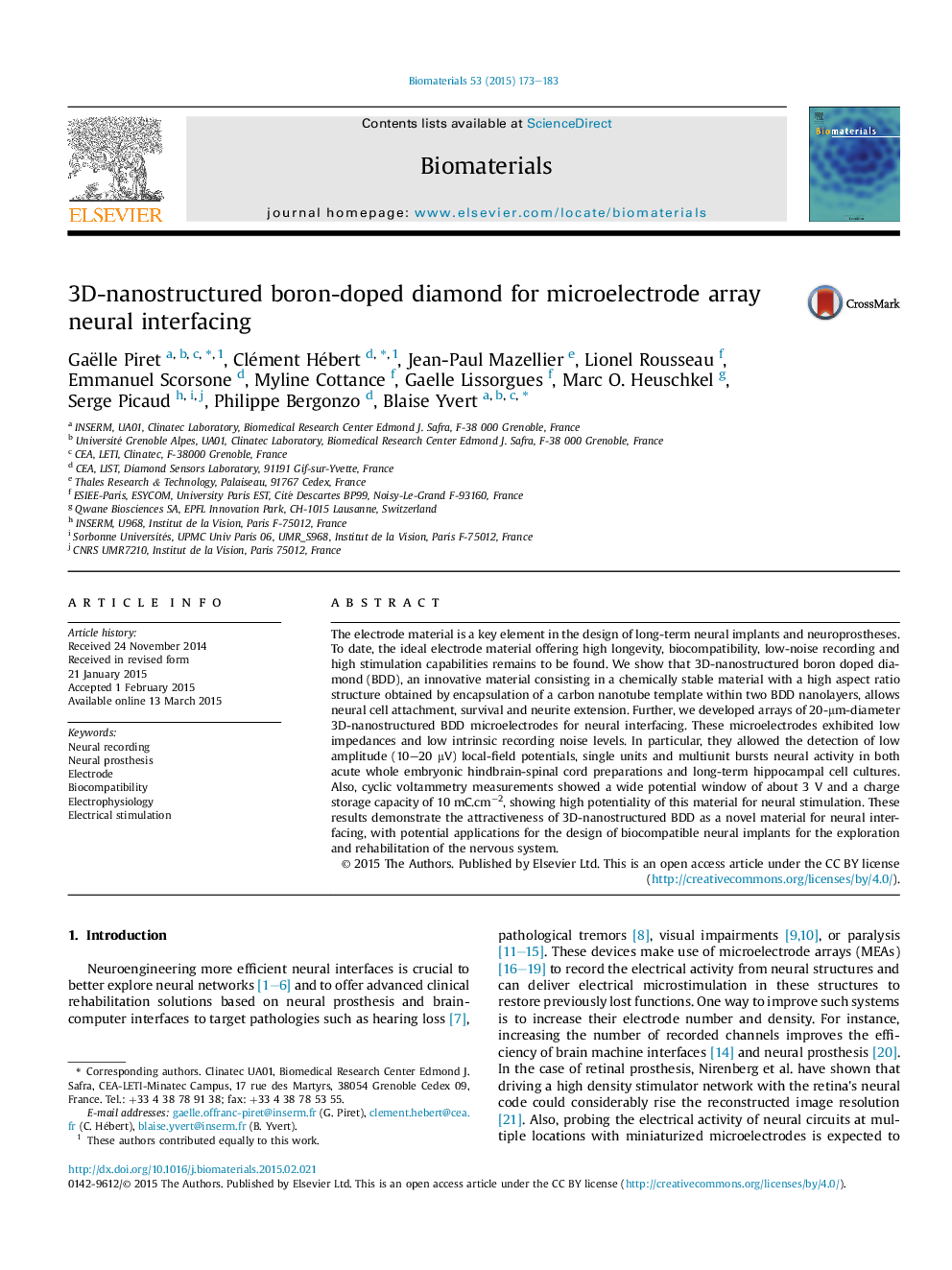| Article ID | Journal | Published Year | Pages | File Type |
|---|---|---|---|---|
| 6485788 | Biomaterials | 2015 | 11 Pages |
Abstract
The electrode material is a key element in the design of long-term neural implants and neuroprostheses. To date, the ideal electrode material offering high longevity, biocompatibility, low-noise recording and high stimulation capabilities remains to be found. We show that 3D-nanostructured boron doped diamond (BDD), an innovative material consisting in a chemically stable material with a high aspect ratio structure obtained by encapsulation of a carbon nanotube template within two BDD nanolayers, allows neural cell attachment, survival and neurite extension. Further, we developed arrays of 20-μm-diameter 3D-nanostructured BDD microelectrodes for neural interfacing. These microelectrodes exhibited low impedances and low intrinsic recording noise levels. In particular, they allowed the detection of low amplitude (10-20 μV) local-field potentials, single units and multiunit bursts neural activity in both acute whole embryonic hindbrain-spinal cord preparations and long-term hippocampal cell cultures. Also, cyclic voltammetry measurements showed a wide potential window of about 3 V and a charge storage capacity of 10 mC.cmâ2, showing high potentiality of this material for neural stimulation. These results demonstrate the attractiveness of 3D-nanostructured BDD as a novel material for neural interfacing, with potential applications for the design of biocompatible neural implants for the exploration and rehabilitation of the nervous system.
Keywords
Related Topics
Physical Sciences and Engineering
Chemical Engineering
Bioengineering
Authors
Gaëlle Piret, Clément Hébert, Jean-Paul Mazellier, Lionel Rousseau, Emmanuel Scorsone, Myline Cottance, Gaelle Lissorgues, Marc O. Heuschkel, Serge Picaud, Philippe Bergonzo, Blaise Yvert,
